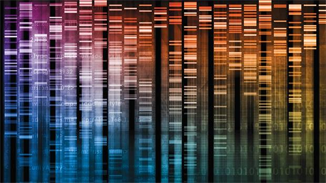Team:UFMG Brazil/Project/Intro
From 2014.igem.org
Daniela fc (Talk | contribs) |
Daniela fc (Talk | contribs) |
||
| Line 155: | Line 155: | ||
<p>From different approaches to colorectal cancer screening, Klaassen et al (2003) proposed a noninvasive method to it. Analysis of stool samples from colorectal cancer patients contain increased concentration of human DNA. This increase could be explained by decreased apoptosis of bowel cells and/or increased shedding of cancer. Ahlquist et al. (2000) have already demonstrated that large DNA fragments were amplified from DNA in stool samples from colorectal cancer patients more frequently than from healthy volunteers. Analysis of human DNA extracted from stool specimens is a recent, simple and potentially interesting approach for cancer diagnostics and for colorectal cancer screening.</p> | <p>From different approaches to colorectal cancer screening, Klaassen et al (2003) proposed a noninvasive method to it. Analysis of stool samples from colorectal cancer patients contain increased concentration of human DNA. This increase could be explained by decreased apoptosis of bowel cells and/or increased shedding of cancer. Ahlquist et al. (2000) have already demonstrated that large DNA fragments were amplified from DNA in stool samples from colorectal cancer patients more frequently than from healthy volunteers. Analysis of human DNA extracted from stool specimens is a recent, simple and potentially interesting approach for cancer diagnostics and for colorectal cancer screening.</p> | ||
<br> | <br> | ||
| - | <p> All of this taken into account, we decided to modify an organism, such as a probiotic bacteria or yeast, to secrete a sensor capable of detecting this L-DNA molecules and alert the problem to the patient. Check our | + | <p> All of this taken into account, we decided to modify an organism, such as a probiotic bacteria or yeast, to secrete a sensor capable of detecting this L-DNA molecules and alert the problem to the patient. Check our <a href="https://2014.igem.org/Team:UFMG_Brazil/Project/Parts">Parts</a> to see how!</p> |
</div> | </div> | ||
</div> | </div> | ||
Latest revision as of 01:23, 18 October 2014
The colorectal cancer

Colorectal cancer includes tumors affecting ...
... a segment of the large intestine (colon) and rectum. It is treatable and, in most cases, curable when detected early, before they haven`t spread to other organs. Most of these tumors starts from polyps, benign lesions may grow on the inner wall of the large intestine.
The estimated new cases in Brazil in 2013 was 32,600, 15,070 men and 17,530 women. These values correspond to an estimated risk of 15 new every 100 000 men and 16 women per 100 thousand cases. While the number of deaths was 14,016, with 7,198 woman and 6.818 man, as updated in 2011. According to the National Cancer Institute (INCA) was estimated incidence of Colorectal Cancer, 2006, as the 5th most common malignancy among men (with 11,390 new) and 4 among women (13,970 new cases) cases, being higher in the age group between 50 and 70 years, but the potential development has increased from 40 years. (INCA, Souza et al, 2008)
The diagnosis requires a biopsy (take tissue fragment removed the suspicious lesion), made by handset introduced by rectum (endoscope). This procedure is invasive and often inhibits patients to submit to this practice, hampering the discovery of cancer at an early stage and thereby reducing the chances of effective treatment and cure. Thinking this bias, our group, The Colonyeast, is developing a methodology for noninvasive diagnosis.
DNA-L

From different approaches to colorectal cancer screening, Klaassen et al (2003) proposed a noninvasive method to it. Analysis of stool samples from colorectal cancer patients contain increased concentration of human DNA. This increase could be explained by decreased apoptosis of bowel cells and/or increased shedding of cancer. Ahlquist et al. (2000) have already demonstrated that large DNA fragments were amplified from DNA in stool samples from colorectal cancer patients more frequently than from healthy volunteers. Analysis of human DNA extracted from stool specimens is a recent, simple and potentially interesting approach for cancer diagnostics and for colorectal cancer screening.
All of this taken into account, we decided to modify an organism, such as a probiotic bacteria or yeast, to secrete a sensor capable of detecting this L-DNA molecules and alert the problem to the patient. Check our Parts to see how!
References
Ahlquist DA, Skoletsky JE, Boynton KA, Harrington JJ, Mahoney DW, Pierceall WE, et al. Colorectal cancer screening by detection of altered human DNA in stool: feasibility of a multitarget assay panel. Gastroenterology 2000; 119:1219–27.
[Klaassen CHW, Jeunink MAF, Prinsen CFM, Ruers TJM, Tan AC, Strobbe LJA, et al. Quantification of human DNA in feces as a diagnostic test for the presence of colorectal cancer. Clinical chemistry. 2003; 49:1185-7.
 "
"